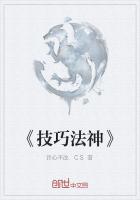7. That state of the hypochondrium is best when it is free from pain, soft, and of equal size on the right side and the left. But if inflamed, or painful, or distended; or when the right and left sides are of disproportionate sizes;- all these appearances are to be dreaded. And if there be also pulsation in the hypochondrium, it indicates perturbation or delirium; and the physician should examine the eyes of such persons; for if their pupils be in rapid motion, such persons may be expected to go mad. A swelling in the hypochondrium, that is hard and painful, is very bad, provided it occupy the whole hypochondrium; but if it be on either side, it is less dangerous when on the left. Such swellings at the commencement of the disease prognosticate speedy death; but if the fever has passed twenty days, and the swelling has not subsided, it turns to a suppuration. Adischarge of blood from the nose occurs to such in the first period, and proves very useful; but inquiry should be made if they have headache or indistinct vision; for if there be such, the disease will be determined thither. The discharge of blood is rather to be expected in those who are younger than thirty-five years. Such swellings as are soft, free from pain, and yield to the finger, occasion more protracted crises, and are less dangerous than the others. But if the fever continue beyond sixty days, without any subsidence of the swelling, it indicates that empyema is about to take place; and a swelling in any other part of the cavity will terminate in like manner. Such, then, as are painful, hard, and large, indicate danger of speedy death; but such as are soft, free of pain, and yield when pressed with the finger, are more chronic than these.
Swellings in the belly less frequently form abscesses than those in the hypochondrium; and seldomest of all, those below the navel are converted into suppuration; but you may rather expect a hemorrhage from the upper parts. But the suppuration of all protracted swellings about these parts is to be anticipated. The collections of matter there are to be thus judged of: such as are determined outwards are the best when they are small, when they protrude very much, and swell to a point; such as are large and broad, and which do not swell out to a sharp point, are the worst. Of such as break internally, the best are those which have no external communication, but are covered and indolent; and when the whole place is free from discoloration. That pus is best which is white, homogeneous, smooth, and not at all fetid; the contrary to this is the worst.















